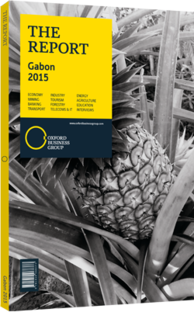Gert Vandersmissen, Group COO, SIAT: Interview

Interview: Gert Vandersmissen
How do you expect livestock production to evolve during the coming years?
GERT VANDERSMISSEN: Food production as a whole in Gabon is still very insufficient, as nearly 95% of the food consumed here is imported. When it comes to livestock, SIAT has 5000 heads of cattle and produces about one tonne of meat annually. As Gabon’s demand for meat is estimated at 80,000 tonnes a year, 100% of our production is geared towards the local market. There are also small-sized or independent livestock producers, especially in the poultry and pork segments, but their output is still very limited.
The population in Gabon, and in the wider Central Africa region, is expected to double during the next 25 years. That will result in an ever-growing demand for animal proteins. Gabon has to develop its agricultural sector more intensively, as the current business model based on revenues from oil and gas is no longer sustainable. Gabon should not be reliant on food imports, since is home to a very favourable climate for agriculture and could produce food such as vegetables at a fourth of the price of imported food, while at the same time creating jobs for the population. Given the evolution of the meat market regionally, we should see more livestock companies coming to Gabon during the next few years to boost the local livestock production.
What infrastructure should be upgraded to boost the development of agriculture?
VANDERSMISSEN: Gabon has two major highways, RN1 and RN2, which need to be completed quickly in order to smooth out and improve the transportation of goods across the country, as the current poor road quality has resulted in a high rate of accidents.
Additionally, the Owendo port is too small and waiting times of up to one to two weeks are an impediment to economic operators and represent extra costs for them. It would also be interesting for the Owendo port to be open 24/7 to reduce the congestion in and around the facility. However, we have seen an improvement in terms of waiting times over the course of the past two years as new equipment such as cranes have been acquired. Overall we are optimistic with regards to the upgrading of transportation infrastructure in the country.
What are Gabon’s biggest comparative advantages for rubber and palm oil production?
VANDERSMISSEN: Due to different climate conditions, the average yield for palm oil production in Africa is half of that obtained in Asian countries like Malaysia and Indonesia, where the weather is sunnier and there is no dry season. Even though Gabon stands out in Africa for boasting the best yield, with around 22 tonnes per hectare, this is still low compared to Asia’s 40 tonnes per hectare.
Nonetheless, it is strategic for African countries like Gabon to keep producing palm oil – even with these lower yield rates – as producers in Asia are increasingly facing regulatory limitations in terms of planting areas. Meanwhile, Asian demand should keep growing over the next two decades. Based on the conjunction of these two factors, export opportunities from Asia to the rest of the world are expected to progressively diminish. This is why African countries have to seize the opportunity to develop local palm oil production to meet the growing demand in their own domestic markets.
As for rubber production, Gabon boasts an average yield of up to 2.2 tonnes per ha compared to 1.6-1.7 tonnes in Asia. On the minus side, rubber is a speculative commodity, so global prices fluctuate a great deal. Now we are on a downward trend, and at about $1500 per tonne we are reaching breakeven point, but when prices pick up to $5000 per tonne over the next five years, the rubber sector in Gabon will have the latitude to grow in a more robust way.
You have reached the limit of premium articles you can view for free.
Choose from the options below to purchase print or digital editions of our Reports. You can also purchase a website subscription giving you unlimited access to all of our Reports online for 12 months.
If you have already purchased this Report or have a website subscription, please login to continue.

